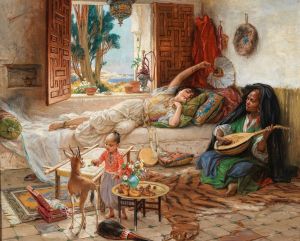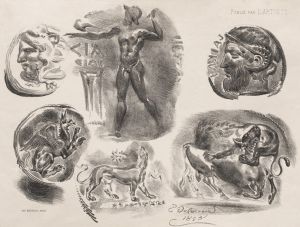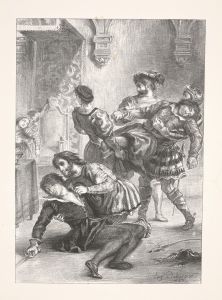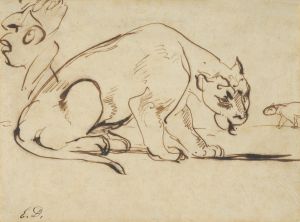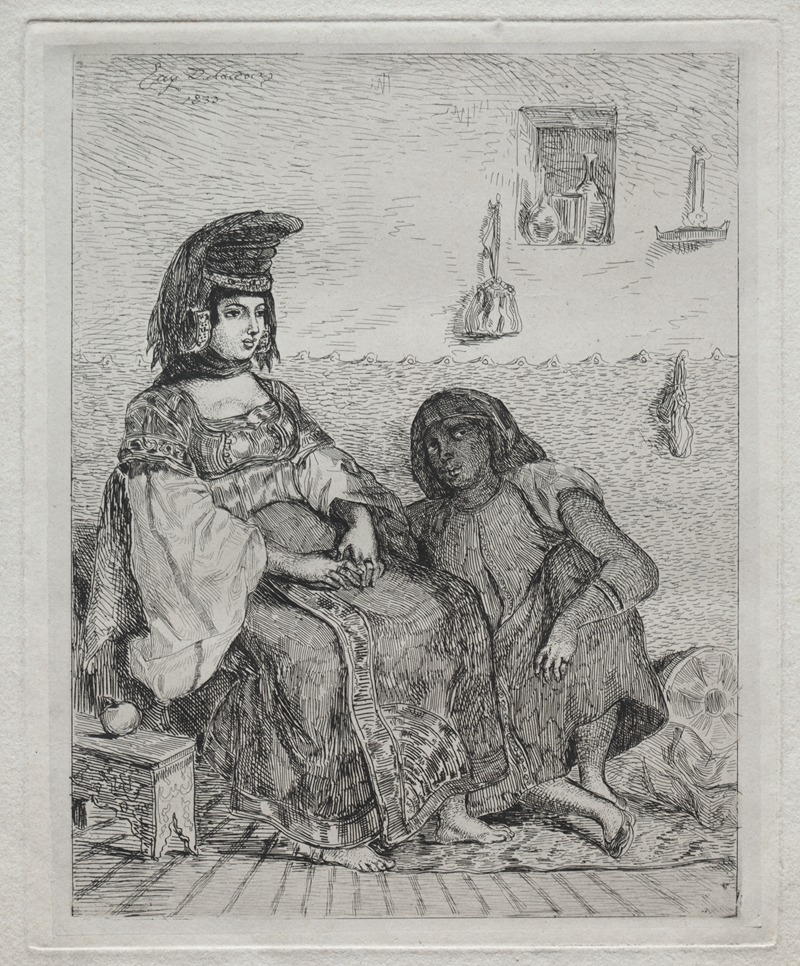
A Jewish Woman of Algiers
A hand-painted replica of Eugène Delacroix’s masterpiece A Jewish Woman of Algiers, meticulously crafted by professional artists to capture the true essence of the original. Each piece is created with museum-quality canvas and rare mineral pigments, carefully painted by experienced artists with delicate brushstrokes and rich, layered colors to perfectly recreate the texture of the original artwork. Unlike machine-printed reproductions, this hand-painted version brings the painting to life, infused with the artist’s emotions and skill in every stroke. Whether for personal collection or home decoration, it instantly elevates the artistic atmosphere of any space.
"A Jewish Woman of Algiers" is a painting by the renowned French Romantic artist Eugène Delacroix, created in 1834. Delacroix is celebrated for his vibrant use of color and expressive brushwork, and this painting is a testament to his fascination with the exotic and the cultural diversity he encountered during his travels.
The painting depicts a Jewish woman from Algiers, Algeria, dressed in traditional attire. Delacroix's interest in North African culture was piqued during his visit to Morocco and Algeria in 1832. This journey profoundly influenced his work, as he was captivated by the region's rich cultural tapestry and the vividness of its people and landscapes. The trip provided him with a wealth of inspiration, leading to a series of works that explored the themes and aesthetics of North Africa.
In "A Jewish Woman of Algiers," Delacroix captures the subject with a sense of dignity and grace. The woman is portrayed seated, with a calm and introspective expression. Her attire is richly detailed, showcasing Delacroix's keen eye for the intricate patterns and textures of traditional clothing. The use of color is particularly striking, with warm tones that highlight the woman's features and the luxurious fabric of her garments.
Delacroix's approach to this painting reflects his broader interest in Orientalism, a trend in 19th-century European art that sought to depict the cultures of the Middle East and North Africa. While Orientalism has been critiqued for its often romanticized and stereotypical portrayals, Delacroix's work is noted for its attempt to capture the authenticity and individuality of his subjects. His paintings from this period are characterized by a sense of immediacy and vitality, as he sought to convey the essence of the people and places he encountered.
The painting is also significant for its historical context. During the early 19th century, Algeria was undergoing significant changes, having been invaded by France in 1830. Delacroix's work provides a glimpse into the cultural landscape of the region during this tumultuous period. His portrayal of a Jewish woman is particularly noteworthy, as it highlights the diverse communities that existed in Algeria at the time.
"A Jewish Woman of Algiers" is housed in the Musée des Beaux-Arts in Bordeaux, France. It remains an important example of Delacroix's engagement with themes of cultural diversity and his ability to convey the beauty and complexity of the human experience through his art. The painting continues to be studied and appreciated for its artistic merit and its contribution to the understanding of 19th-century Orientalism.
Delacroix's legacy as a leading figure in the Romantic movement is reinforced by works like "A Jewish Woman of Algiers," which demonstrate his mastery of color, composition, and his empathetic portrayal of subjects from diverse backgrounds. His work not only reflects his personal experiences but also offers insight into the broader cultural and historical dynamics of his time.










